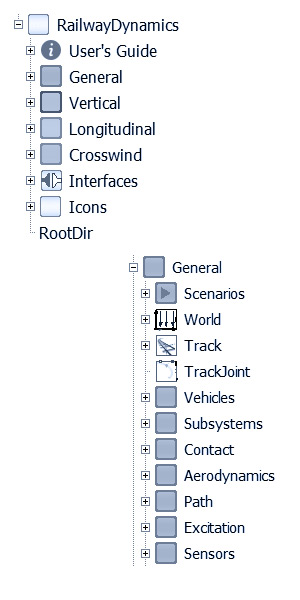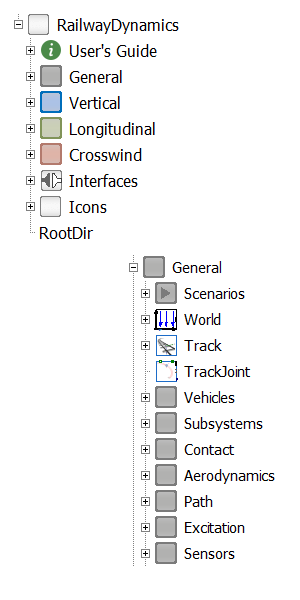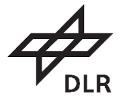DLR RailwayDynamics LIBRARY
The commercial DLR RailwayDynamics Library is intended to support the design, optimization and control development as well as hardware- and software-in-the-loop testing of railway vehicles mainly on the system level. To this aim, it provides the capability to consider vehicle dynamics issues such as traction, comfort and safety in multi-domain engineering tasks by preparation of vehicle, track, wheel-rail contact models and roller rig scenarios on different levels of detail. The beta-release of the library is available for interested parties since November 2018, the first full version is scheduled for April 2019.
FEATURES OF THE LIBRARY
- The track is an arbitrary 3D curve r=r(s) parametrized by the track length parameter s and visualized as a red band in animations.
- The track irregularities specify local deviations or disturbances of the idealized curve r=r(s).
- The track joint is a degree of freedom that presents the capability to move along r=r(s).

- The specific wheelset model reproduces inertia properties and considers five degrees of freedom in addition to the longitudinal motion already covered by an attached track joint.
- The track panel presents two rail stubs and one sleeper that are assumed to move along the track with the associated wheelset and may also be used to take the flexibility of the rail road into account.

- Several alternative models consider a one-point rolling contact between wheel and rail or wheel and roller, respectively.
- The contact refers to an arbitrary wheel and rail profile geometry, which might be user defined as well.
- As regards the tangential direction, a linear and a non-linear contact is predefined, but may also be replaced by a user defined model.

- The library offers a template to substructure vehicle models in the railroad base, which is an aggregation of track panels and track joints, the running gears with several wheelsets, bogies and suspensions and the carbody

- The Vertical subpackage contains specific models tailored for comfort analysis in early design phases
- the models in the Longitudinal subpackage are streamlined for studies on the traction behavior
- the Crosswind subpackage is dedicated to simplified crosswind assessment as proposed by the associated standard
- To a large extent, detailed 3D- and simplified specific purpose models are compatible and may be used together in one scenario in order to balance accuracy and computational effort.

APPLICATION EXAMPLES
Crosswind Stability of DLR’s Next Generation Train
Braking Tests on a Wheelset Roller Rig
Crosswind Stability of DLR’s Next Generation Train
| Crosswind stability addresses the risk that vehicles running on high speed are prone to overturning, if high crosswinds occur. The assessment of this risk is part of the vehicle acceptance procedure and uses wind tunnel measurements in order to present the aerodynamic forces that are applied to the train model running along a straight track. The simulated wheel unloading on the windward side is the criterion in order to assess the crosswind stability of the train under consideration, which here is DLR’s Next Generation Train. |  |
Braking Tests on a Wheelset Roller Rig
| The use of test rigs for railway research and development is widely spread in industry as well as at research institutes. In order to support the set-up of appropriate testing scenarios such as studies on the brake equipment of trains and associated friction conditions the RailwayDynamics Library contains all necessary components including specific contact models for the wheel-roller contact to build up a suitable simulation environment. |
Braking Tests on a Wheelset Roller Rig |



